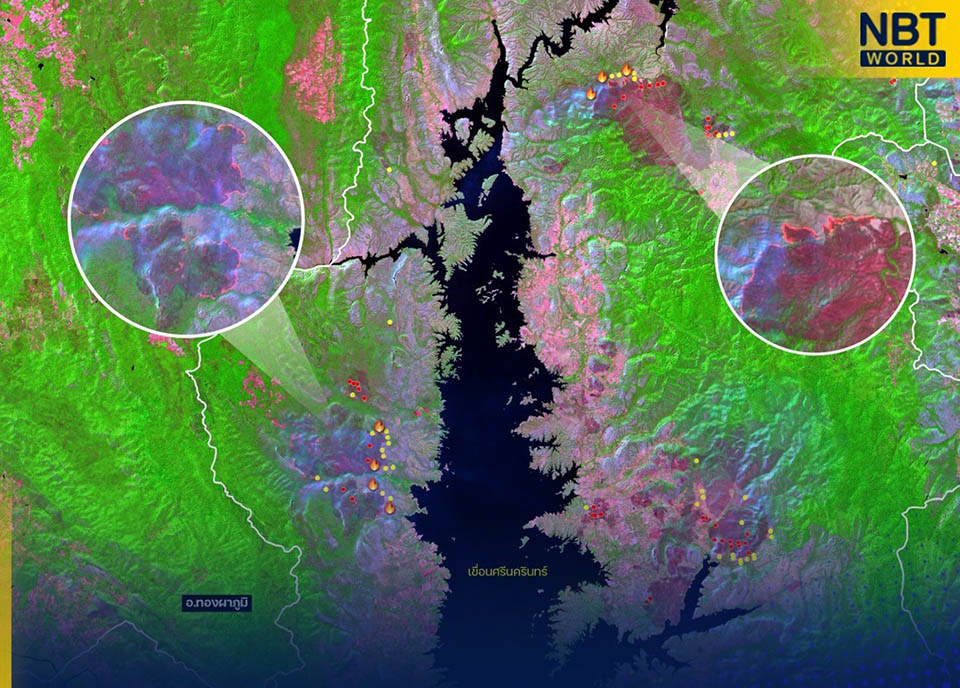
The Geo-Informatics and Space Technology Development Agency (GISTDA) reported detecting nearly 6,000 hotspots across neighboring countries on Sunday (Feb 11), with Cambodia accounting for the majority at over 4,000. Satellite data from the Suomi NPP satellite identified a total of 5,823 hotspots, with Myanmar, Laos, and Vietnam also contributing to the count.
Within Thailand, 601 hotspots were observed, particularly in Kanchanaburi province, which had the highest number at 110.
According to GISTDA, air pollution levels have surged, with PM2.5 concentrations nationwide surpassing the safe limit of 37.5 micrograms per cubic meter, except in parts of the South. The situation has escalated to orange-coded dust levels in 30 provinces, indicating a health risk, especially to vulnerable individuals. Bangkok’s air quality has also deteriorated, with current levels expected to worsen from February 12 to 18, affecting at least 17 districts.
Experts from the Thailand Environment Institute stress the longstanding nature of PM2.5 pollution, especially in the north, highlighting its adverse effects on health and tourism. The group has called for an integrated approach to address the issue, including a ban on slash-and-burn farming and regional cooperation to mitigate cross-border pollution. (NNT)








